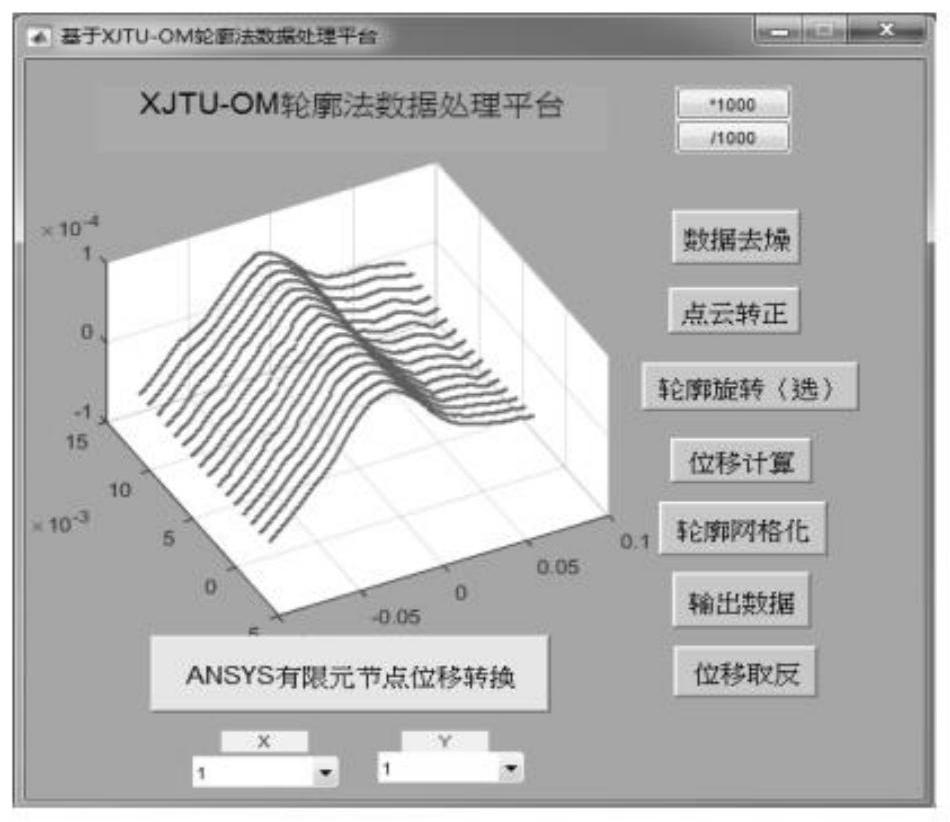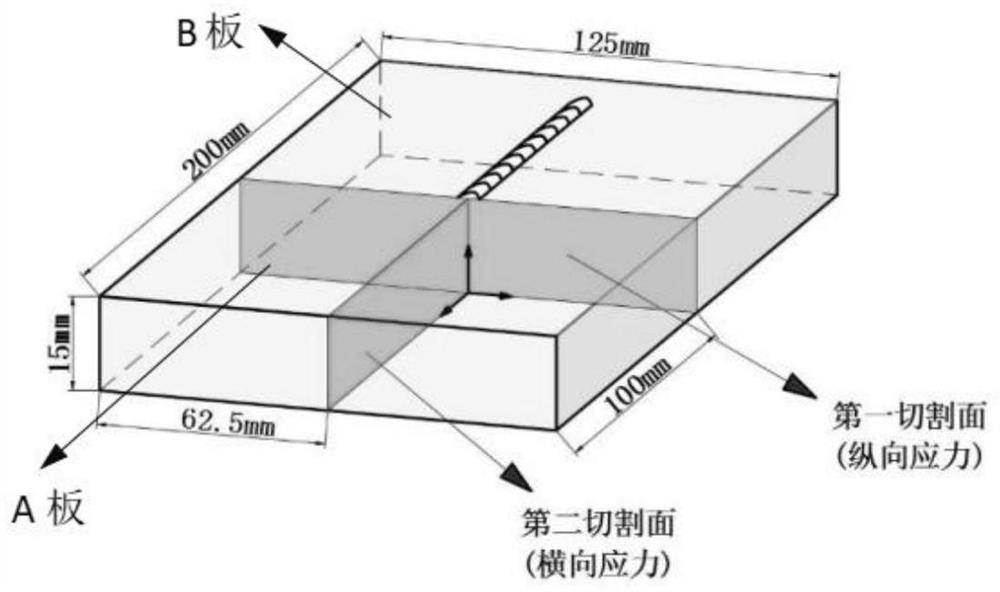Three-dimensional optical profilometry method for testing multiple welding residual stress components
A residual stress, three-dimensional optical technology, used in measuring devices, force/torque/work measuring instruments, instruments, etc., can solve the problems of time-consuming, inability to accurately measure longitudinal stress and transverse stress gradient, complex and cumbersome, etc.
- Summary
- Abstract
- Description
- Claims
- Application Information
AI Technical Summary
Problems solved by technology
Method used
Image
Examples
Embodiment
[0056] In this embodiment, Q345 low-carbon steel is selected for the experiment, and ordinary tungsten inert gas welding (TIG) is used. The size of the Q345 test plate is 200mm*125mm*15mm. The weld is located in the center of the test plate, starting from 40mm from one end of the test plate, the length of the weld is 120mm, and the actual width of the weld is about 10mm. Consider performing stress-relief annealing treatment on the test plate. The process parameters of stress-relief annealing are holding temperature 590°C and heating rate 100°C·h -1 , The cooling method is furnace cold, and the holding time is 3h. Welding process parameters: welding current 230A, welding voltage 17.5V, shielding gas 15L min -1 , welding speed 15cm·min -1 .
[0057] A method for testing multiple welding residual stress components by three-dimensional optical profilometry, the steps of which are as follows:
[0058] Step 1: Before welding, perform stress relief annealing on the test plate, t...
PUM
 Login to View More
Login to View More Abstract
Description
Claims
Application Information
 Login to View More
Login to View More - R&D
- Intellectual Property
- Life Sciences
- Materials
- Tech Scout
- Unparalleled Data Quality
- Higher Quality Content
- 60% Fewer Hallucinations
Browse by: Latest US Patents, China's latest patents, Technical Efficacy Thesaurus, Application Domain, Technology Topic, Popular Technical Reports.
© 2025 PatSnap. All rights reserved.Legal|Privacy policy|Modern Slavery Act Transparency Statement|Sitemap|About US| Contact US: help@patsnap.com



